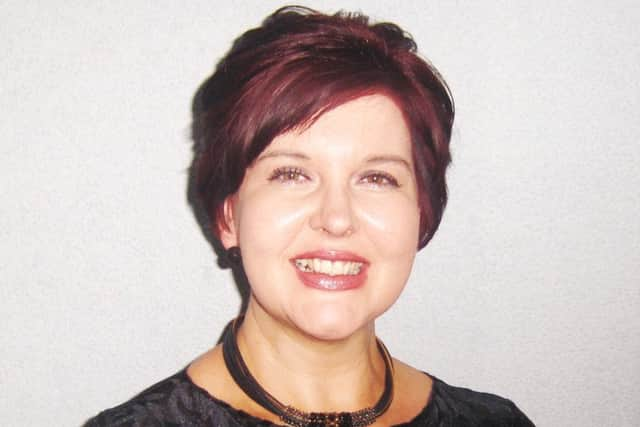Work stream set up to combat tech sector gender gap


Hundreds of innovative companies have sprung up across the country but for them to see their growth strategies through, a skilled workforce is required, and this year is set to see increased demand for web and mobile software developers in particular.
According to Tech Nation 2016, there are 101,397 digital tech economy jobs in Scotland, with figures from CodeClan suggesting 11,000 new positions are being created every year.
Advertisement
Hide AdAdvertisement
Hide AdYet women make up just 18 per cent of Scotland’s tech workforce. While there is no one root cause of gender imbalance in the sector, what we do know is that it starts early and needs to be tackled from a young age through targeted interventions and support for females at every stage of the pipeline.


“Two key issues that emerged in research as potential barriers to women’s participation in technology are a lack of awareness of the opportunities available in the industry and the potential effect of negative stereotypes,” says Evelyn Walker, who chairs Digital Technologies Skills Group’s (DTSG) Gender Work Stream and is UK and Ireland project management lead for Hewlett Packard Enterprise.
“However, research has found that many young girls at school look positively at digital technology subjects and the majority of those studying computing science described it as interesting, important and enjoyable.
“This suggests that by raising awareness of the opportunities in an inspirational and credible way, there is significant opportunity to attract girls into technology education and careers.”
But the current gender gap in IT hasn’t always been so marked. Walker says that in the early days of computing many more women were present in the sector.


A decline in the 1980s – which has been explained by some as the result of families buying computers for boys rather than girls, which put them ahead of their female peers further down the line – led to the pronounced gap that exists in the sector today.
With evidence that women have shown an interest in technology careers in the past, Walker is confident change is possible.
DTSG is working with partners across Scotland to develop and implement a joint action plan to attract women into the sector.
Advertisement
Hide AdAdvertisement
Hide AdThe starting point was a report by Edinburgh Napier University – Tackling the Technology Gender Gap Together – which laid out the current situation specifically for Scotland and provided an evidence base from which to plan the action required.
“The research indicates that there are a lot of females who are open to the idea of working in tech,” says Walker.
“To turn that willingness into a real increase in the number of women in our sector we need to reach, support and inspire them to take the next steps.”
Initiatives such as mentoring schemes, extracurricular coding groups and the Digital World campaign – a project from Scotland’s digital technologies sector and Skills Development Scotland – are certainly making progress in terms of raising awareness and changing perceptions of digital technology careers.
Girl Geek Scotland is setting the ball rolling in Scottish schools, while at the other end of the talent pipeline, DTSG is working with Equate Scotland to create a best practice guide to support employers to attract, recruit and retain more female talent.
“We need to raise the profile of the sector and show a clear opportunity for career progression in order to attract more young girls,” says Walker.
“A key element has to be educating parents, nursery and primary teachers that technology is an exciting career choice and is on par with other highly skilled careers.”
At undergraduate level in 2013-2014, there were over 52,000 students studying programmes in science, technology, engineering and mathematics at Scottish universities and there has been a gradual increase in STEM undergraduates since 2009.
Advertisement
Hide AdAdvertisement
Hide Ad“Most female computing science graduates aspire to work in the sector after completing their studies,” explains Walker. “However, researchers found that female students displayed less confidence than males that they would be able to move into their preferred technology-related role.”
Walker says this presents a wonderful opportunity for better engagement between universities and STEM employers in order to show that “step process” into a technology role.
“This could be when in early university education, STEM employers engage in respect of environment and work experience, sponsorship, internships, graduate programmes, in order to lead to employment.”
Working collaboratively could also attract female graduates from non-technical backgrounds; research shows that around half of women in STEM roles come from backgrounds such as creative arts, business studies and natural studies.
“Role models and mentors are an incredibly valuable way of communicating just how much is possible if young people choose to embark on a computing science qualification,” says Walker.
“To have the greatest positive effect, the role models need to be inspirational, credible and close enough in age to their audience that young girls can relate to them and their career path.”
Looking to the future, Walker doesn’t see gender imbalance in the sector as something that will be resolved in the short term, with continuous development of solutions required by a range of stakeholders including education, industry and public agencies.
“It is important that solutions are developed to tackle this issue from early years onwards,” says Walker.
Advertisement
Hide AdAdvertisement
Hide Ad“However, attracting more females to enter STEM careers is only part of the solution.
“We have to ensure that women are encouraged to remain in this sector and progress into interesting, rewarding and senior roles.
“This is an exciting challenge for all of us and one that I am really looking forward to and proud to be part of.”
This article appears in the SPRING 2017 edition of Vision Scotland.